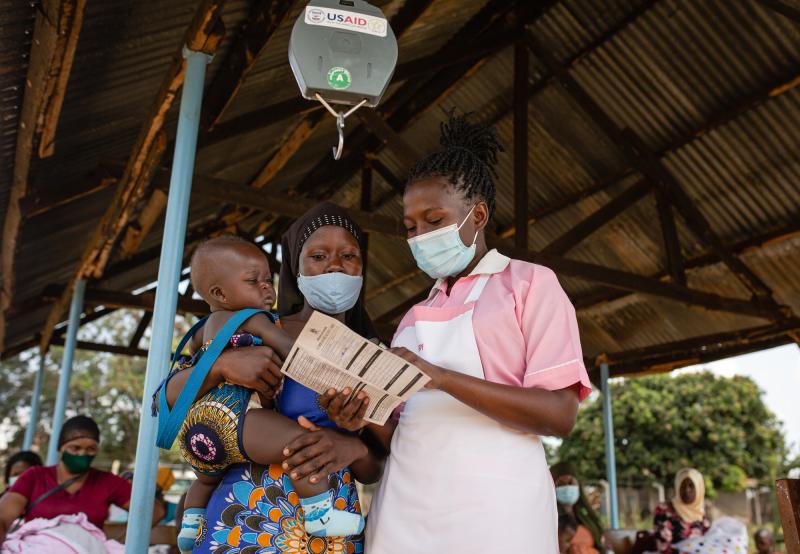Where We Work
See our interactive map


A health worker in Uganda weighs a baby before administering immunizations at Nakaloke Health Center III in Mbale, Uganda. Photo by Esther Ruth Mbabazi for IntraHealth International.
Between 2017 and 2023, Uganda strengthened its health workforce and systems, improved health services, and championed locally led development in collaboration with IntraHealth’s Regional Health Integration to Enhance Services in Eastern Uganda (RHITES-E) Activity.
Led by IntraHealth in partnership with The AIDS Support Organization (TASO), Communication for Development Foundation Uganda (CDFU), Malaria Consortium, and Medic, the USAID-funded project worked closely with the government at the national and local levels to expand access to high-quality health services. RHITES-E also supported Uganda’s response to the COVID-19 pandemic and an outbreak of Ebola Virus Disease and helped the Eastern region to be better prepared to respond to future threats through the establishment of public health emergency operations centers at the Mbale and Moroto Regional Referral Hospitals.
IntraHealth used health systems strengthening as its overarching approach for RHITES-E, building on strong collaborative relationships with districts, regional hospitals, health facilities, and communities, and fostering data-driven decision-making to strengthen local leadership in oversight of implementation. Key systems improvements include:
Through a “whole of district” mindset, RHITES-E worked with district leaders, local partners, health workers, and community groups to expand access to health care in 30 districts in Eastern Uganda and Karamoja, home to over 7 million Ugandans. High-quality integrated services improved through the project encompass family planning; maternal, newborn, and child health; HIV/AIDS and tuberculosis; malaria; nutrition; and water, sanitation and hygiene. Highlights of results include:
As part of RHITES-E, IntraHealth collaborated with ideas42 with funding from the William and Flora Hewlett Foundation on an initiative in six districts to improve the health and well-being of women of reproductive age, in particular by engaging the male partners of postpartum women in the benefits of child spacing. The “SupCap” project used a four-stage behavioral science methodology to co-design solutions with community members, including 1) an interactive game played by male partners of postpartum women, facilitated by village health teams; 2) a child spacing/referral card received by game participants to fill out with their partners and take to a health facility; and 3) text messages sent to game players, village health teams, and health workers. This project:
During its last two years, RHITES-E provided technical assistance in transitioning HIV service delivery to local implementing partners and family health services to the districts in alignment with IntraHealth’s and USAID’s focus on local capacity strengthening and locally led development. These local partners include Baylor Uganda, ANECCA, the Uganda Protestant Medical Bureau, and the Mbale and Moroto Regional Referral Hospitals, all of which received capacity development support from IntraHealth.



